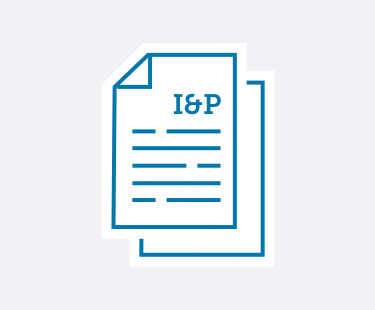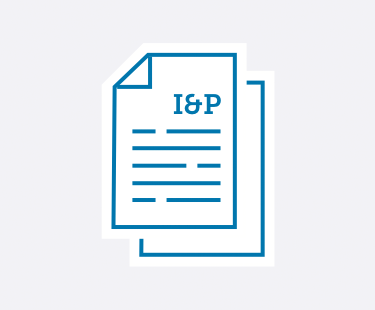

Learn practical strategies to handle emerging trends and leadership challenges in private schools.
No matter if you’re a School Head, Admission Director, Development Director, Board member, or any other private school administrator—Ideas & Perspectives, ISM’s premier private school publication, has strategic solutions for the pervasive problems you face.
- Tuition not keeping pace with your expenses? In I&P, explore how to use strategic financial planning to create your budget and appropriately adjust your tuition.
- Enrollment dropping off? Discover how to implement the right admission and enrollment management strategies that engage your community—and fill your classrooms.
- Trouble retaining teachers? Learn how you can best support your teachers using ISM’s Comprehensive Faculty Development framework. Your faculty members will become more enthusiastic about their roles—which ultimately improves student outcomes.
- Fundraising campaigns not as successful as you’d hoped? Implement ISM’s practical advice and guidance to build a thriving annual fund, construct an effective capital campaign, and secure major donors—no matter your community size or location.
- Not sure how to provide professional development—for you and your staff? Learn ways to develop and fund a successful professional development strategy. You can improve teacher-centered satisfaction and growth, which in turn strengthens student-centered learning.
- Problematic schedule? You can master the challenges of scheduling with the help of ISM’s practical advice, based on our experience with hundreds of schools and our time-tested theories.
- And so much more.
I&P has shared targeted research, up-to-date insight, and sound theory with school leaders since 1975. More than 8,500 private school decision-makers find the answers to their schools’ administrative and governance matters in our advisory letter. We give you the strategic answers you need.
As an ISM Silver or Gold member, you not only receive issues online and in print 10 times a year, but you have access to more than 600 articles in our web archive. Need help? It’s at your fingertips! Learn more and sign up for ISM's membership here.
Search
See the articles from our latest issue of Ideas & Perspectives.
The Head’s Role in Your School’s Community Service Program
Volume 27 No. 5 // April 11, 2002
When community service and service learning are an integral part of life at a school, children come to understand that their help makes a difference. Further, they appreciate that service must be a lifelong commitment. The following article is one in a continuing series on developing your school’s community service and service learning program.
1. Already a member? Click here to login.
2. Not a member? Click here to become a member.
3. Not sure? We'll help you figure it out.
Financial Questions the Search Committee Should Ask Head Candidates
Volume 27 No. 5 // April 11, 2002
As the Chair of your school’s Head Search Committee, you are charged with spearheading the process of identifying and recommending your school’s next CEO. The committee will be analyzing the experience, skills, and strengths of each candidate. It will want to match the candidate’s professional and personal qualities with the school’s needs.
1. Already a member? Click here to login.
2. Not a member? Click here to become a member.
3. Not sure? We'll help you figure it out.
Cultivating Your Core Cadre of Substitute Teachers
Volume 27 No. 4 // March 30, 2002
Substitute teachers are essential – and good ones are difficult to find. Over the years, you, as Head, have assembled a key group of talented, reliable substitute teachers. They are the first people called because of their expertise, their teaching skills, and their knowledge of and support for your school. Similarly, your school may be their first choice for work assignments. However, as your programs change or your teachers learn and apply the latest pedagogy, these substitutes may begin to feel out of place in your faculty culture. Consider offering annual orientation and professional development to your core group of substitutes so that they, like your regular faculty members, can maintain excellence in the classroom.
1. Already a member? Click here to login.
2. Not a member? Click here to become a member.
3. Not sure? We'll help you figure it out.
Beyond Salaries: Retaining the Veteran Teacher
Volume 27 No. 2 // February 10, 2002
ISM recently surveyed a random sample of 450 I&P subscriber schools to gather information about compensation for full-time faculty. The 194 responding schools answered questions concerning teacher salaries, selected benefits, and hiring. The preceding issue showed implications of the salary data; this article focuses on non-salary benefits.
1. Already a member? Click here to login.
2. Not a member? Click here to become a member.
3. Not sure? We'll help you figure it out.
Full-Time Faculty Compensation Survey 2001: Day School Salaries
Volume 27 No. 1 // January 13, 2002
In our continuing research concerning the competition for quality teachers that private-independent schools are now experiencing, ISM recently surveyed a random sample of 450 I&P subscriber schools. The 194 responding schools answered questions concerning the salaries, selected benefits, and hiring of full-time faculty members. This article concerns the salaries of full-time teachers at day schools only (166 schools). For more information on the participating institutions, see “About the Respondents” on the last page of this artical.
1. Already a member? Click here to login.
2. Not a member? Click here to become a member.
3. Not sure? We'll help you figure it out.
The Implications of Education Savings Accounts
Volume 26 No. 16 // December 25, 2001
In May 2001, Congress approved a tax package – the “Economic Growth and Tax Relief Reconciliation Act of 2001” – that includes tax-advantaged education savings accounts (ESAs)1 The new provisions, which are effective January 1, 2002, allow families to set aside funds not only for college but for K-12 expenses – including tuition, after-school tutoring, books, uniforms, and computers. Parents can place up to $2,000 (up from $500) of after-tax dollars per tax year per child into ESAs; the new law also allows third parties (e.g., relatives, employers, corporations) to participate. Contributions to an ESA are not tax-deductible, but the interest accrues tax-free until the savings are withdrawn, and withdrawals would not be subject to taxation if used for qualified expenses.
1. Already a member? Click here to login.
2. Not a member? Click here to become a member.
3. Not sure? We'll help you figure it out.
‘Back Up’ Your Management Team With Task Calendars
Volume 26 No. 16 // December 25, 2001
What would you, as the Head of School, do if your Business Manager were unable to perform her job responsibilities – especially those that are critical (e.g., preparing your school’s IRS Form 990), confidential (e.g., processing the payroll), or mandatory (e.g., completing a required state report)? Who would assume the day-to-day operation of the Development Office if the Development Director fell gravely ill? If the Upper School Head suddenly resigns, who will submit names of students for membership in the National Honor Society or Cum Laude – and when is the deadline?
1. Already a member? Click here to login.
2. Not a member? Click here to become a member.
3. Not sure? We'll help you figure it out.
Your Parent Education Plan During Uncertain Times
Volume 26 No. 15 // November 25, 2001
In August 2001, ISM published its updated and revised list of thee ISM Stability Markers®. One month later, the nation entered a period of political and economic uncertainty that has elicited strong emotional reactions, particularly anxiety. The Stability Markers are research-derived correlates and predictors of institutional viability and programmatic excellence over time. They serve as guidelines for strategic planning, a process that includes envisioning the school six or more years out. The current national uncertainties have created psychological threats in the here and now. Anxiety impedes the day-to-day operation of institutions, and institutional leaders know that some amelioration is called for.
1. Already a member? Click here to login.
2. Not a member? Click here to become a member.
3. Not sure? We'll help you figure it out.
The New Stability Markers: Next-Level Placement and Success
Volume 26 No. 14 // November 5, 2001
The following article comprises a supplementary recommendation regarding next-level placement and success. One of the least used – yet potentially most effective – approaches to determining your school’s overall success is tracking your students’ next-level placement and accomplishments. From this, your school can develop a database from which to strengthen its marketing impact. The two-step process involves: – deriving a graduate-outcome descriptors list from your mission statement, and – creating and using a short survey of your young alumni based upon that descriptors list.
1. Already a member? Click here to login.
2. Not a member? Click here to become a member.
3. Not sure? We'll help you figure it out.
Sustain Your School Operations in Tough Times
Volume 26 No. 14 // November 5, 2001
As we continue in a period of uncertainty in our national life, now is a good time for Boards and Heads to revisit – or create and implement – their short-term financial crisis management plan.
1. Already a member? Click here to login.
2. Not a member? Click here to become a member.
3. Not sure? We'll help you figure it out.


